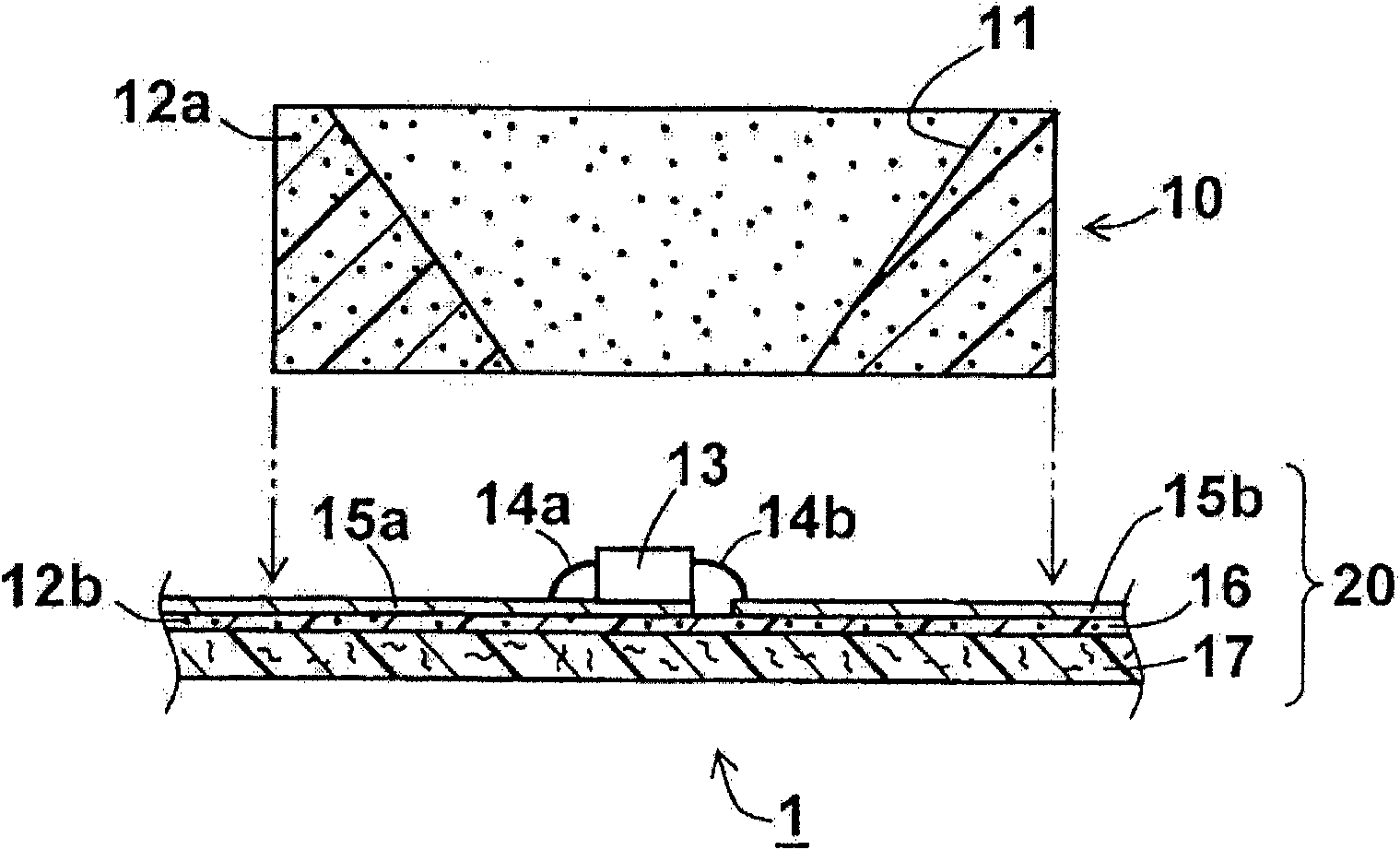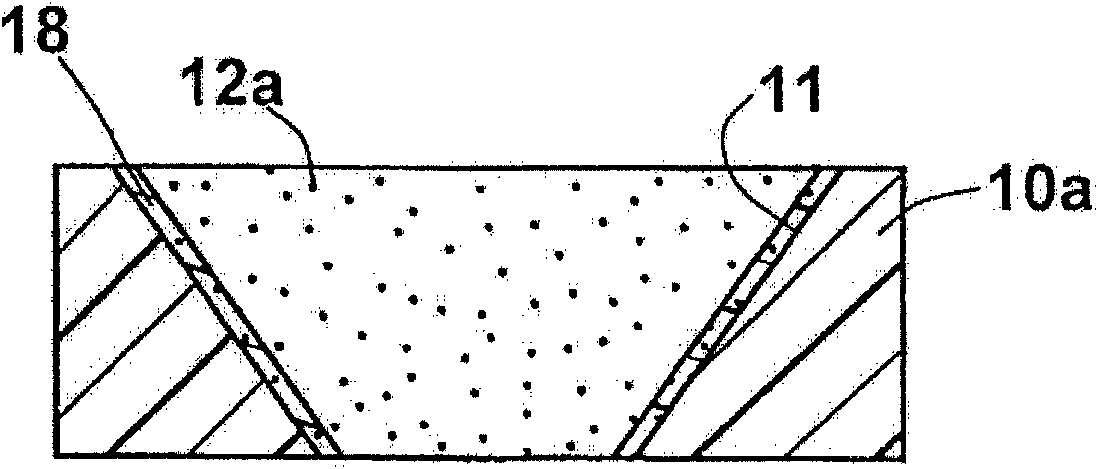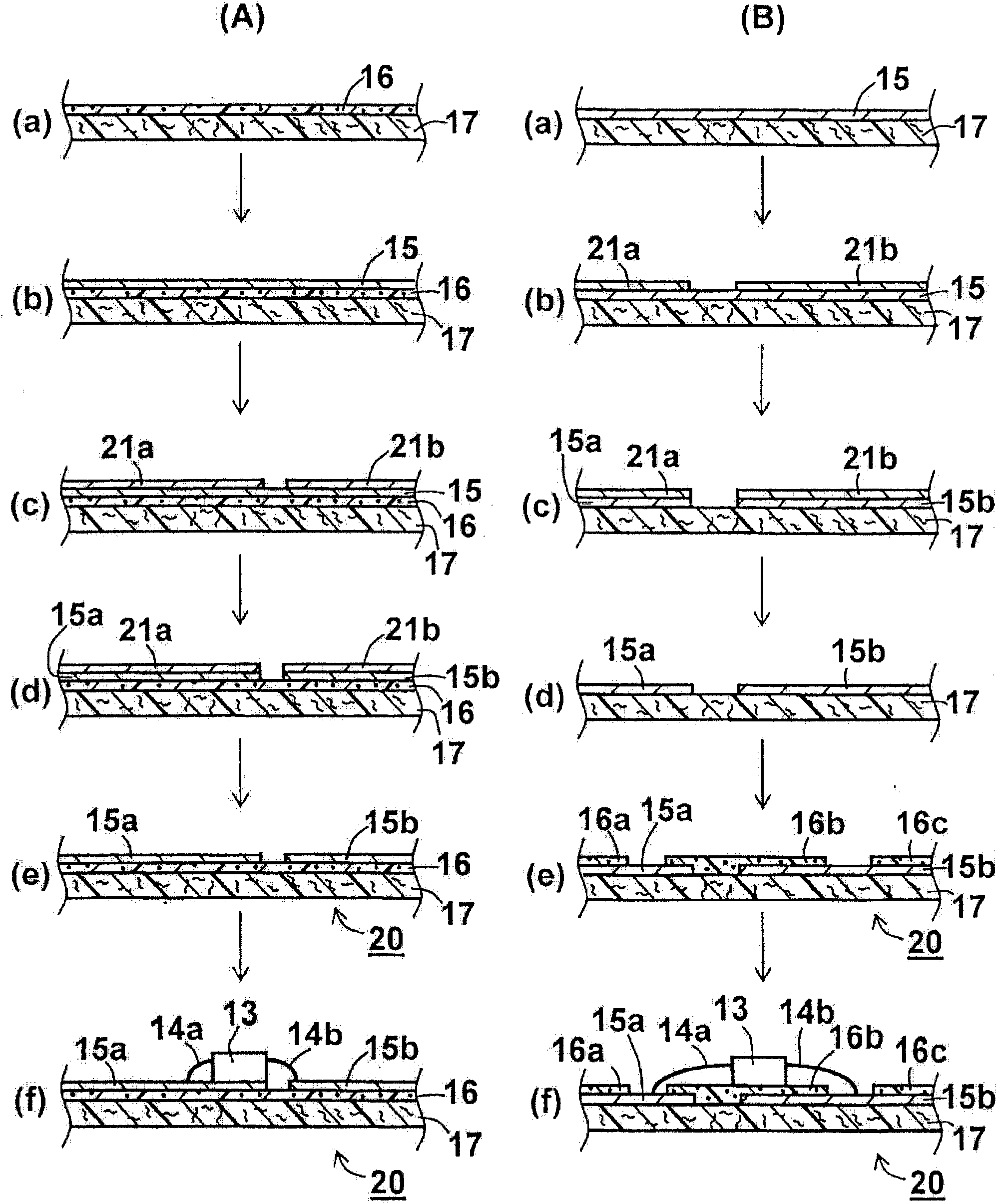White color reflecting material and process for production thereof
A white reflection, substrate technology, applied in thin material processing, photovoltaic power generation, instruments, etc., can solve the problems of large reflectivity changes over time, epoxy resin deterioration, reflectivity decline, etc., to achieve excellent durability and weather resistance. Excellent, high mechanical strength effect
- Summary
- Abstract
- Description
- Claims
- Application Information
AI Technical Summary
Problems solved by technology
Method used
Image
Examples
Embodiment 1
[0125] Add dispersed anatase type titanium oxide (trade name SA-1; Japan Sakai Chemical Industry Co., Ltd. ( Sakai Chemical Industry Co., Ltd.) 10 parts by mass, heated and pressurized, and cured at 170° C. for 5 minutes to produce a white reflective plate with a length of 70 mm, a width of 70 mm, and a thickness of 1 mm. Thereafter, annealing was performed at 170° C. for 90 minutes to prepare a measurement sample. The reflectance after elapse of 1000 hours at 150 degreeC was measured using the spectrophotometer UV-3150 (made by Shimadzu). Here, the reflectance was measured with respect to the light of three wavelengths (380nm, 550nm, and 780nm). The measurement results are shown in Table 1 below.
[0126] [Table 1]
[0127] Table 1
[0128]
[0129] "Evaluation of reflectance after a period of time at high temperature"
[0130] Table 1 shows that after 1000 hours, no significant drop in reflectance was observed, and no yellowing or deterioration occurred, so it is exc...
Embodiment 2 and comparative example 1
[0132] In 100 mass parts of bismaleimide-triazine resin (BT resin), glass epoxy resin (GE resin) respectively, add dispersed rutile type titanium oxide (trade name SR-1; Chemical Industry Co., Ltd.) 100 parts by mass to prepare one substrate each having a film thickness of 50 μm.
[0133] On the other hand, a bismaleimide-triazine resin substrate and a glass epoxy resin substrate having a thickness of 25 μm were obtained in the same manner as above.
[0134] Using a bar coater, the silicon composition was coated on each base material (BT resin base material, GE resin base material) having a thickness of 25 μm to prepare a silicone resin composition coating having a thickness of 25 μm. A laminate of films to obtain a white reflective plate with a thickness of 50 μm, wherein the silicon composition is obtained by adding rutile-type titanium oxide (trade name SR-1; Sakai Chemical Industry Co., Ltd., Japan) to the silicone resin used in Example 1. (manufactured by Sakai Chemical ...
Embodiment 3
[0140] On a BT resin substrate with a thickness of 25 μm obtained in the same manner as in Example 2, the proportions of rutile-type titanium oxide were 10 parts by mass (phr), 25 phr, and 50 phr relative to 100 parts by mass of the silicone resin. , and 250 phr of the titanium oxide-containing silicone composition were respectively coated into a film with a thickness of 25 μm, thereby obtaining a laminated white reflective material with a thickness of 50 μm. Carry out the reflectivity measurement identical with embodiment 2, the correlation between its irradiation wavelength and reflectivity is shown in Figure 8 . In addition, the same heat treatment and reflectance measurement as in Example 2 were carried out, and the correlation between the irradiation wavelength and the reflectance was shown in Figure 9 .
[0141] "Evaluation of the reflectance of rutile-type titanium oxide in a laminated white reflector with a film thickness of 25 μm coated on a base material made of ...
PUM
| Property | Measurement | Unit |
|---|---|---|
| particle diameter | aaaaa | aaaaa |
| reflectivity | aaaaa | aaaaa |
| particle diameter | aaaaa | aaaaa |
Abstract
Description
Claims
Application Information
 Login to View More
Login to View More - R&D
- Intellectual Property
- Life Sciences
- Materials
- Tech Scout
- Unparalleled Data Quality
- Higher Quality Content
- 60% Fewer Hallucinations
Browse by: Latest US Patents, China's latest patents, Technical Efficacy Thesaurus, Application Domain, Technology Topic, Popular Technical Reports.
© 2025 PatSnap. All rights reserved.Legal|Privacy policy|Modern Slavery Act Transparency Statement|Sitemap|About US| Contact US: help@patsnap.com



